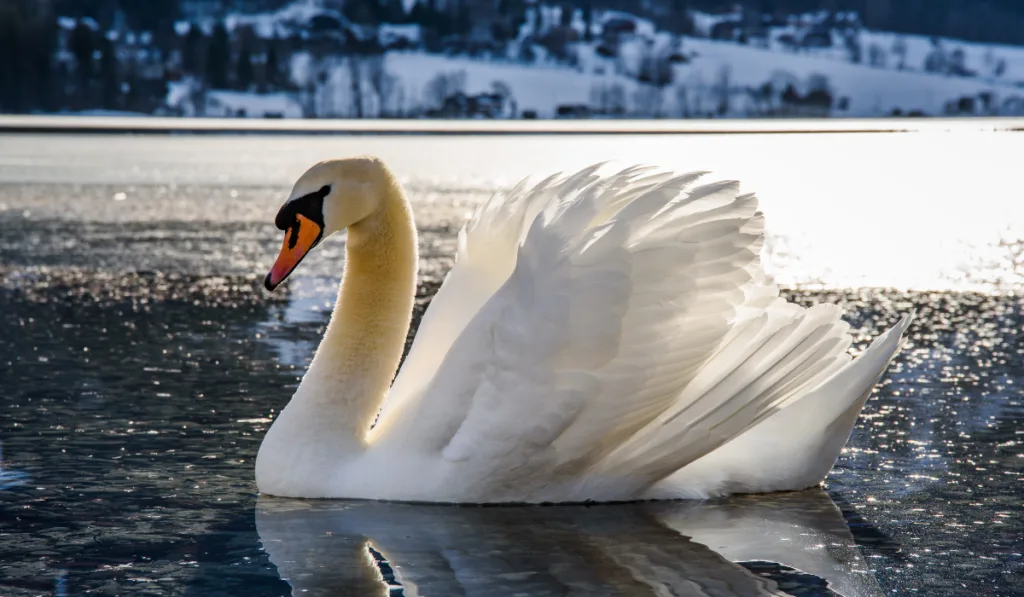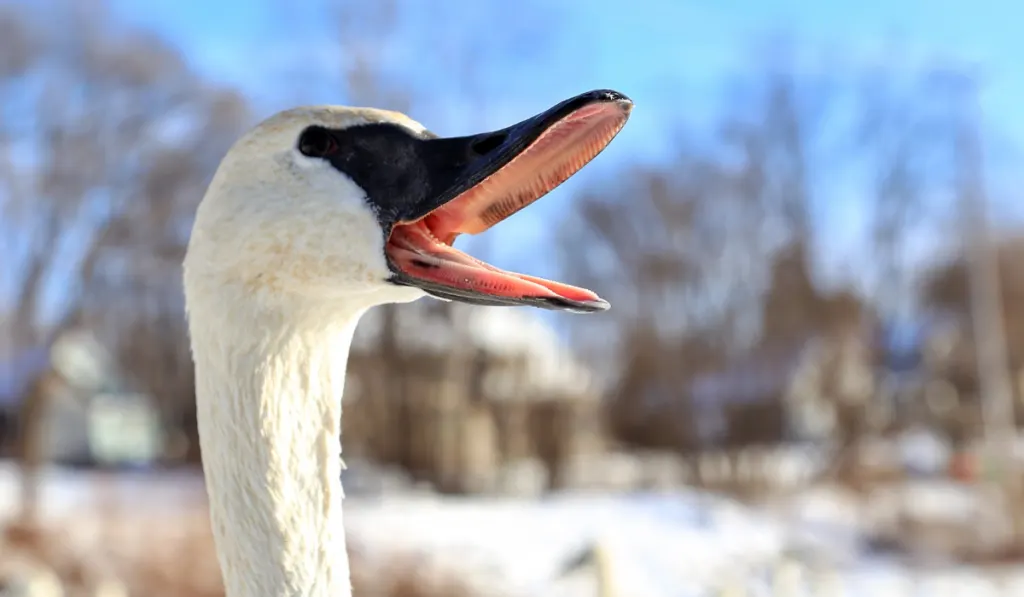Swans are regarded as one of the most graceful, majestic, and beautiful birds in the world.
They are members of the Anatidae family within the Cygnus genus. They are large aquatic birds and have close relations with ducks and geese.
Do swans have teeth?
No, swans do not have teeth.

Swans do not have teeth, but their beaks are designed with serrated edges that share a striking resemblance to small jagged teeth.
The serrated edges on swans’ beaks have several uses, like eating algae and aquatic plants. They are also used to catch small fish, worms, and frogs.
There are many uses for the serrated edges on swans’ beaks. Swans must eat certain foods because of their lack of teeth.
What should you feed your swans? And can you get hurt by a swan?
Table of Contents
Do Swans Have Teeth?
Swans do not have teeth, and this makes chewing impossible for them.
In swans, dental structures like jawbones and teeth have been replaced by the gizzard.
In a bird, the gizzard is basically a muscular organ that functions in the same way as the molar teeth of a mammal.
The gizzard is, however, quite powerful. The swan uses its gizzard to grind food until it is easy enough for it to be digested.
For example, when a hard grain like wheat is hand fed to a swan, it needs to be ground into a pulp before the swan can digest it properly.
For the swan to do this its needs to have a strong gizzard.

The swan also swallows small particles of grit while feeding. Such particles later become part of the gizzard and help the swan chew food.
Due to the lack of teeth in swans, their weight is reduced. Hence, they need lower energy to take flight.
Do Swans Have Teeth on Their Tongues?
Swans do not have teeth on their tongues. However, they have serrations on their tongues, which look like teeth.
The good thing about these serrations is that they aid in feeding on plant matter.
Swans can pull plants out of the ground easily because of their serrated tongues.
When swans try to pull grass out of the ground, they hold the grass down with their beaks and grip with their serrated tongues then they move their heads swiftly to pull the crop out.
Another use for their serrated tongue is holding small prey like rodents and insects.
The chances of these animals escaping are less likely with the spikes digging through their bodies.
These serrations or serrated tongues may not be tough like real teeth but they are still capable of dealing considerable damage to their prey.

Can a Swan Hurt You?
Swans are regarded as one of the largest waterfowl in Europe and North America.
They can weigh up to 28 pounds and have a wingspan of up to 7.9 feet.
Swans are one of the heaviest flying birds in North America and the UK.
Swans can use the strong beaks they possess to pull and bite. But their huge wings happen to be the most lethal weapon in their arsenal.
These powerful birds can flick their elbows forward and cause serious injury to a predator, such as a coyote or a fox.
Swans can hurt people, but reports of any serious harm involving swans are rare.
In many reported cases, the attacks were triggered by people getting too close to their young or their nests.
Some attacks are also triggered by people wanting to feed the birds.
Researchers say in all their years of experience handling swans, the only injury they have received is simple bruising.
As already mentioned, swans do not have any teeth. When they feel any threats, they tend to peck and hiss, which can cause slight injuries.
Experts label reports claiming that swans can break the limb of a human using their wings as myths.
In their defense, swans are defensive animals and will only attack as a last resort.
Compared to other wild animals, swans tend to give a lot of warning before resorting to any form of attack.

What to Feed Swans
Swans are herbivores, and this means their diet consists mainly of greens.
Swans enjoy feeding on plants floating on the water surface because of the easy access.
When seeking out deep-rooted plants, a swan will dive or submerge itself into the water.
Using its long neck as an advantage, the swan can reach plants that other waterfowl are unable to reach.
Swans can leave the water in search of food if the need arises. They can be seen grazing on big grassy fields and do well in a field of cropped grass.
Swans can be found in potato fields in the winter, where they eat the potatoes left after harvesting.
They also eat leafy greens such as spinach and lettuce.
For swans, feeding on the land is not beneficial. They expend more energy walking than swimming.
They are also open to attacks from predators when they are on land.
Swans can always find the food they require in the wild without extra feeding. When the weather is freezing, the extra food becomes helpful.
When feeding swans, you cannot go wrong with vegetables like spinach, cabbage, and potatoes.

You can also feed them vegetable peels and wheat grains. Food should be given to them in the water to prevent the birds from coming on land.
Many people feed bread to swans which is fine as long as it is fresh.
Take note, however, when bread is fed in large amounts, it can lead to dietary problems. Thus, it is no replacement for the proper diet the birds require.
Final Thoughts
Swans, just like the other birds in the Anatidae family, do not have teeth.
They have lamellae along the edges of their beaks that look like teeth. These lamellae allow them to drain the water from their food before swallowing.
Swans will typically not attack or hurt you unless they are provoked.
Resources
- https://www.askprofessorbird.com/single-post/2017/04/20/DONT-MESS-WITH-THE-SWANS
- https://www.worldanimalfoundation.com/animal_encyclopedia/params/category/173340/item/994128/
- https://www.swanlife.com/biolo
- https://www.rspb.org.uk/birds-and-wildlife/wildlife-guides/bird-a-z/mute-swan/feeding/
- https://www.pressreader.com/usa/id-magazine/20190102/282196536920971
